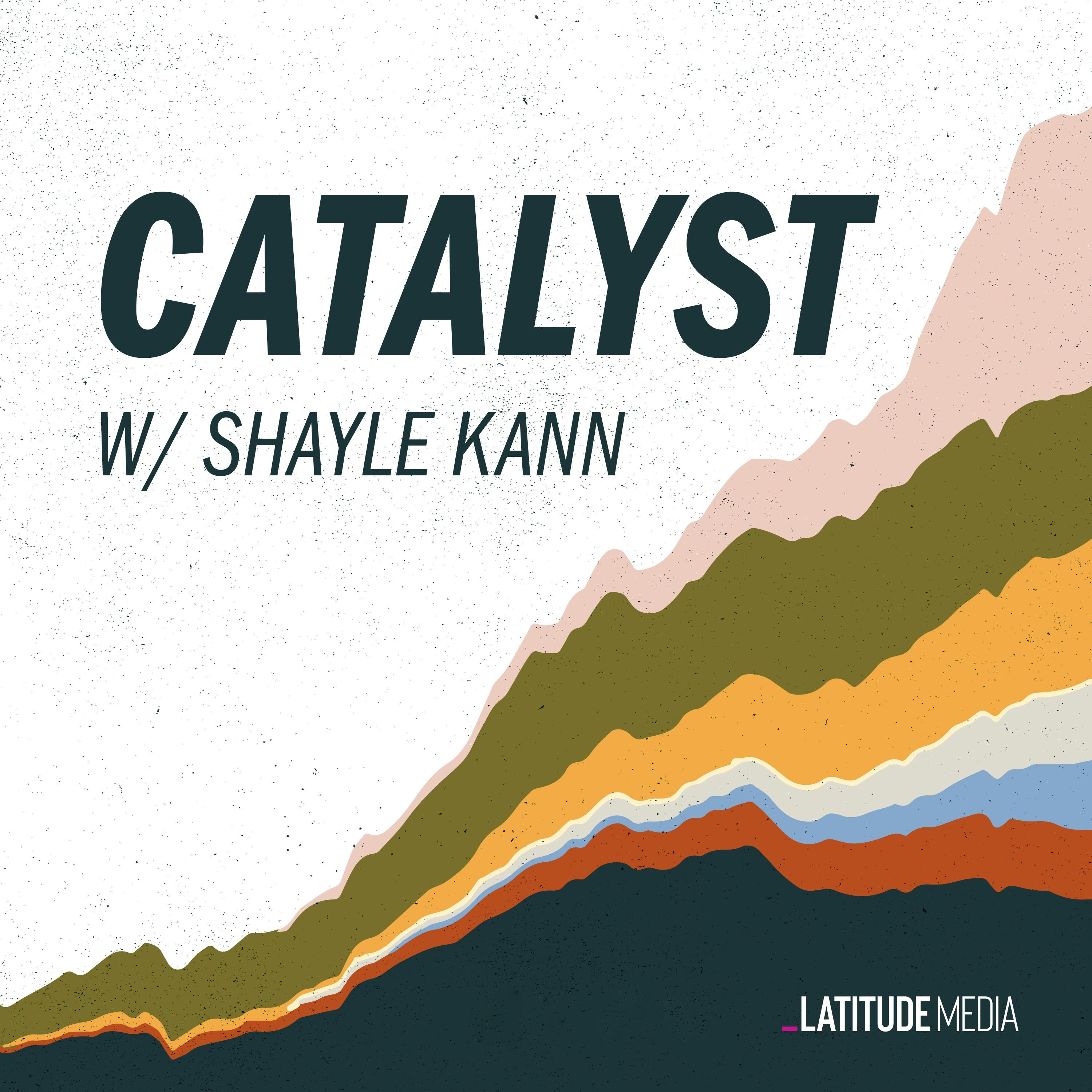

Catalyst with Shayle Kann
Latitude Media
Investor Shayle Kann is asking big questions about how to decarbonize the planet: How cheap can clean energy get? Will artificial intelligence speed up climate solutions? Where is the smart money going into climate technologies? Every week on Catalyst, Shayle explains the world of climate tech with prominent experts, investors, researchers, and executives. Produced by Latitude Media.
Episodes
Mentioned books

Aug 13, 2024 • 33min
Frontier Forum: Is America’s green bank ready?
The podcast dives into America's Greenhouse Gas Reduction Fund and its quest to leverage $27 billion for clean energy projects. Experts discuss the pressing need for a transparent market and uniform lending standards to maximize impact. Hear about the critical role of innovative startups in facilitating funding and the significance of empowering underserved communities through accessible financing. Case studies reveal successful strategies from green banks, spotlighting collaboration's importance in navigating the urgent deployment of capital for a sustainable future.

71 snips
Aug 8, 2024 • 42min
Understanding the transmission bottleneck
Rob Gramlich, founder and president of Grid Strategies, is a leading voice on energy transmission issues. He dives into the urgent need for expanded transmission capacity as the U.S. power grid faces severe congestion, delaying renewable energy projects. They discuss the historical evolution of the transmission network and its impact on climate tech. Gramlich shares innovative strategies like energy storage and regional planning to overcome the bottleneck, emphasizing that past successes show progress is possible if we act swiftly.

12 snips
Aug 2, 2024 • 46min
Pathways to decarbonizing steel
Steel production is a major climate challenge, emitting nearly two tons of CO2 for every ton of steel made. Experts explore the dual emissions from heat and the production process, revealing why coal remains hard to replace. Recycling offers some benefits, but its potential is limited. Innovative methods like Direct Reduced Iron using hydrogen could change the game, while electrolysis presents exciting alternatives. The major players in this transition are taking bold steps, yet the path to a decarbonized steel industry is complex and filled with challenges.

16 snips
Jul 25, 2024 • 43min
The EV market’s awkward teenage years
Gene Berdichevsky, co-founder of Sila Nanotechnologies, discusses the challenges in the EV market. Topics include high-performance cells for lower-cost batteries, potential of sodium-ion batteries, production overcapacity, and limitations of Inflation Reduction Act. Also covers manufacturing competition for electricity, vehicle-to-grid challenges, and factors influencing EV adoption.

33 snips
Jul 18, 2024 • 44min
Can chip efficiency slow AI's energy demand?
Former Microsoft VP Christian Belady discusses the energy demand impact of AI data centers, exploring chip efficiency improvements, Moore’s Law limits, and constraints on AI growth. They examine the rise in data center energy consumption driven by AI boom, predicting 9% of U.S. power by 2030, and discuss potential solutions like changing computing architecture for energy savings.

Jul 17, 2024 • 20min
The reshoring of American solar trackers [partner content]
Solar executive Dan Sugar discusses the reshoring of American solar trackers amid Covid disruptions, emphasizing the need for US manufacturing. Nextracker's efforts have led to over 20 factories with 30 gigawatts of components produced in the US. The podcast also covers innovations in tracker technology, the impact of the Investment Tax Credit, and the evolution of the solar industry.

29 snips
Jul 12, 2024 • 43min
Decarbonizing the high seas
Dr. Lynn Loo discusses decarbonizing maritime shipping with a focus on alternative fuels and energy efficiency. Topics include conventional fuels, impact of cutting sulfur emissions, challenges of lower-carbon fuels like LNG and biofuels, on-board carbon capture, and infrastructure challenges in scaling up new fuels.

36 snips
Jun 27, 2024 • 37min
Going deep on next-gen geothermal
Dr. Roland Horne discusses next-gen geothermal technologies including enhanced, closed-loop, and super-deep methods. They explore transfer of technology from oil and gas industry, advances in drilling, and scalability of geothermal power. Fervo Energy's innovative approach in geothermal development is highlighted, emphasizing the urgency to expedite progress for sustainability.

28 snips
Jun 20, 2024 • 37min
Demystifying the Chinese EV market
TP Huang, an expert in EVs and clean energy in China, discusses the booming Chinese EV market with Shayle. They cover topics like the low cost of EVs, consumer preferences, fast charging, electrification in trucking, and Chinese exports. The episode gives insights into the rapid growth and competitive landscape of the Chinese electric vehicle market.

87 snips
Jun 13, 2024 • 43min
Under the hood of data center power demand
Former Microsoft VP Brian Janous discusses the AI-driven surge in data center power demand, challenges in decarbonization, and the need for innovative grid solutions. Topics include load shaping, off-grid solutions, and acceleration of interconnection through computational load management.


